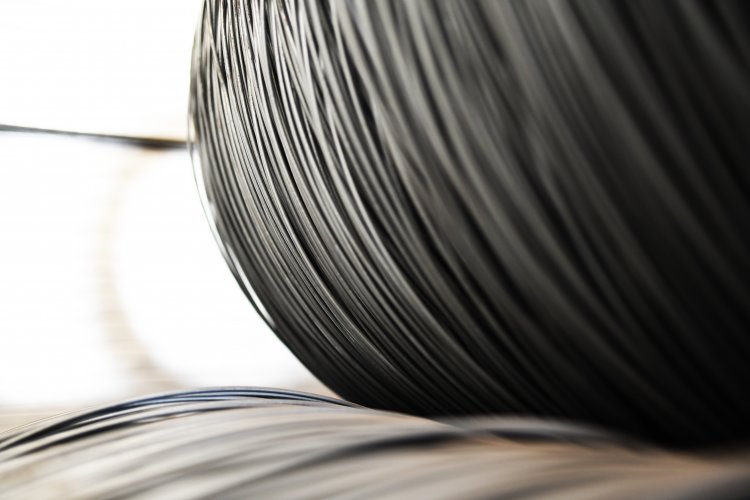Global Sic Fibers Market Size to Reach $3.1 Billion at a CAGR of 25.6% by 2030
Vantage Market Research expects the Sic Fibers Market to reach USD 3.1 Billion by 2030, exhibiting a growth rate (CAGR) of 25.6% during 2023-2030.

The Global Sic Fibers Market size reached USD 0.5 Billion in 2022. Vantage Market Research expects the market to reach USD 3.1 Billion by 2030, exhibiting a growth rate (CAGR) of 25.6% during 2023-2030.
Table of Content [TOC]
|
|
|
|
|
|
|
|
|
|
|
|
|
|
|
|
|
|
|
|
|
|
|
|
Request Sample Report of Sic Fibers Market @ https://www.vantagemarketresearch.com/sic-fibers-market-2212/request-sample
The Revolutionary Rise of SiC Fibers: A Game-Changer in Multiple Industries
SiC fibers have emerged as a transformative technology in the ever-evolving landscape of advanced materials. Silicon Carbide (SiC) fibers are a type of ceramic fiber renowned for their exceptional strength, high-temperature resistance, and lightweight nature.
Unleashing the Power of SiC Fibers
SiC fibers exhibit remarkable mechanical strength, rivaling even some high-performance metals. This exceptional strength-to-weight ratio allows for the construction of lightweight components without compromising on durability. With a melting point exceeding 2,700°C, SiC fibers can withstand extreme temperatures and are highly resistant to thermal shocks. This property makes them ideal for applications in aerospace, energy, and other industries that require materials capable of operating in harsh environments. SiC fibers are chemically inert, meaning they remain unaffected by most corrosive substances. This resistance to chemical degradation enables their use in aggressive environments, including chemical processing plants, nuclear reactors, and offshore drilling operations.
Applications of SiC Fibers
Aerospace and Defense: SiC fibers have extensive utilization in the aerospace sector, where their high strength and thermal stability contribute to developing lightweight, fuel-efficient aircraft components. These fibers are employed in engine components, such as turbine blades and structural parts, to enhance overall performance and fuel economy. In the defense sector, SiC fibers manufacture bulletproof vests and armor plating.
Energy Generation: The energy industry benefits greatly from SiC fibers due to their resistance to extreme temperatures and harsh chemical environments. SiC fibers are employed in constructing gas turbines, heat exchangers, and combustor liners, improving efficiency and longevity in power plants. Additionally, SiC fibers play a vital role in nuclear energy, as they offer enhanced safety and durability in the form of accident-tolerant fuel (ATF) rods.
Automotive Sector: SiC fibers have the potential to revolutionize the automotive industry by enabling the production of lighter, more fuel-efficient vehicles. They are used to manufacture components such as brake pads, clutch plates, and engine parts, leading to reduced weight and improved performance.
Industrial Applications: SiC fibers have made significant headway in various industrial sectors. They are employed in constructing cutting tools, grinding wheels, and abrasives, where their exceptional hardness and wear resistance ensures superior performance and extended product lifetimes.
Buy Now Our SIC Fibers Industry Report @ https://www.vantagemarketresearch.com/buy-now/sic-fibers-market-2212/0
Future Outlook: SIC Fibers Market
As the SiC fiber industry advances, researchers are exploring new ways to optimize the material's properties and expand its application scope. However, a few challenges must be addressed to unlock its full potential. These challenges include the cost of production, ensuring consistent quality, and developing scalable manufacturing techniques.
Conclusion
SiC fibers have ushered in a new era of advanced materials, offering an exceptional combination of strength, high-temperature resistance, and lightweight characteristics. With applications spanning aerospace, energy, automotive, and industrial sectors, SiC fibers are poised to disrupt traditional manufacturing processes and enable the development of innovative solutions. As technology advances and production costs decrease, we can expect SiC fibers to play an even more significant role in shaping the future of multiple industries, paving the way for enhanced performance, efficiency, and sustainability.
Frequently Asked Question (FAQ) – SIC Fibers Market
- What are SiC fibers? SiC fibers are ceramic fibers made from silicon carbide, known for their exceptional strength, high-temperature resistance, and lightweight nature.
- What industries use SiC fibers? SiC fibers find applications in various industries, including aerospace, defense, energy generation, automotive, and industrial sectors.
- How do SiC fibers benefit the aerospace industry? SiC fibers contribute to developing lightweight, fuel-efficient aircraft components, such as engine parts and structural elements, enhancing performance and efficiency.
- What role do SiC fibers play in the energy sector? SiC fibers are used in constructing gas turbines, heat exchangers, and combustor liners in power plants, improving efficiency and durability. They also play a crucial role in nuclear energy for accident-tolerant fuel rods.
- Can SiC fibers revolutionize the automotive sector? Yes, SiC fibers have the potential to revolutionize the automotive industry by enabling the production of lighter, more fuel-efficient vehicles with improved performance.
- How are SiC fibers employed in industrial applications? SiC fibers are utilized in the manufacturing of cutting tools, grinding wheels, and abrasives due to their exceptional hardness and wear resistance.
- What challenges does the SiC fibers market face? Challenges include production cost, ensuring consistent quality, and developing scalable manufacturing techniques.
- What is the future outlook for SiC fibers? Researchers are exploring ways to optimize SiC fiber properties and expand their applications. As technology advances and costs decrease, SiC fibers are expected to play a more significant role in various industries.
- How are SiC fibers manufactured? SiC fibers are typically produced through processes like chemical vapor deposition (CVD) or precursor pyrolysis, where silicon carbide material is deposited onto a substrate.
- Where can I find SiC fibers on the market? SiC fibers can be found from various manufacturers and suppliers specializing in advanced materials. It's recommended to explore industry-specific sources and suppliers for purchasing.
Read Our Latest Press Release: Legal Marijuana Market - In-depth Analysis
Contact us
Eric Kunz
6218 Georgia Avenue NW Ste 1 - 564
Washington DC 20011-5125
United States Tel: +1 202 380 9727
Email: [email protected]
Website: Vantage Market Research


















